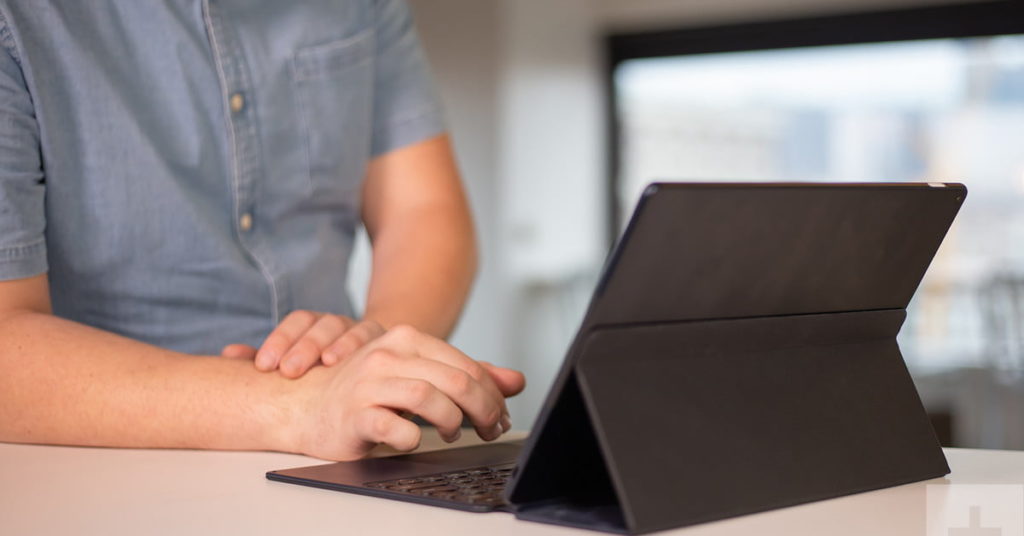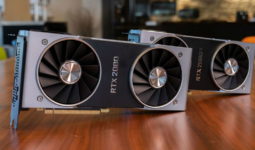Google Pixel Slate vs. Google Pixelbook: Pixel Powerhouse Showdown
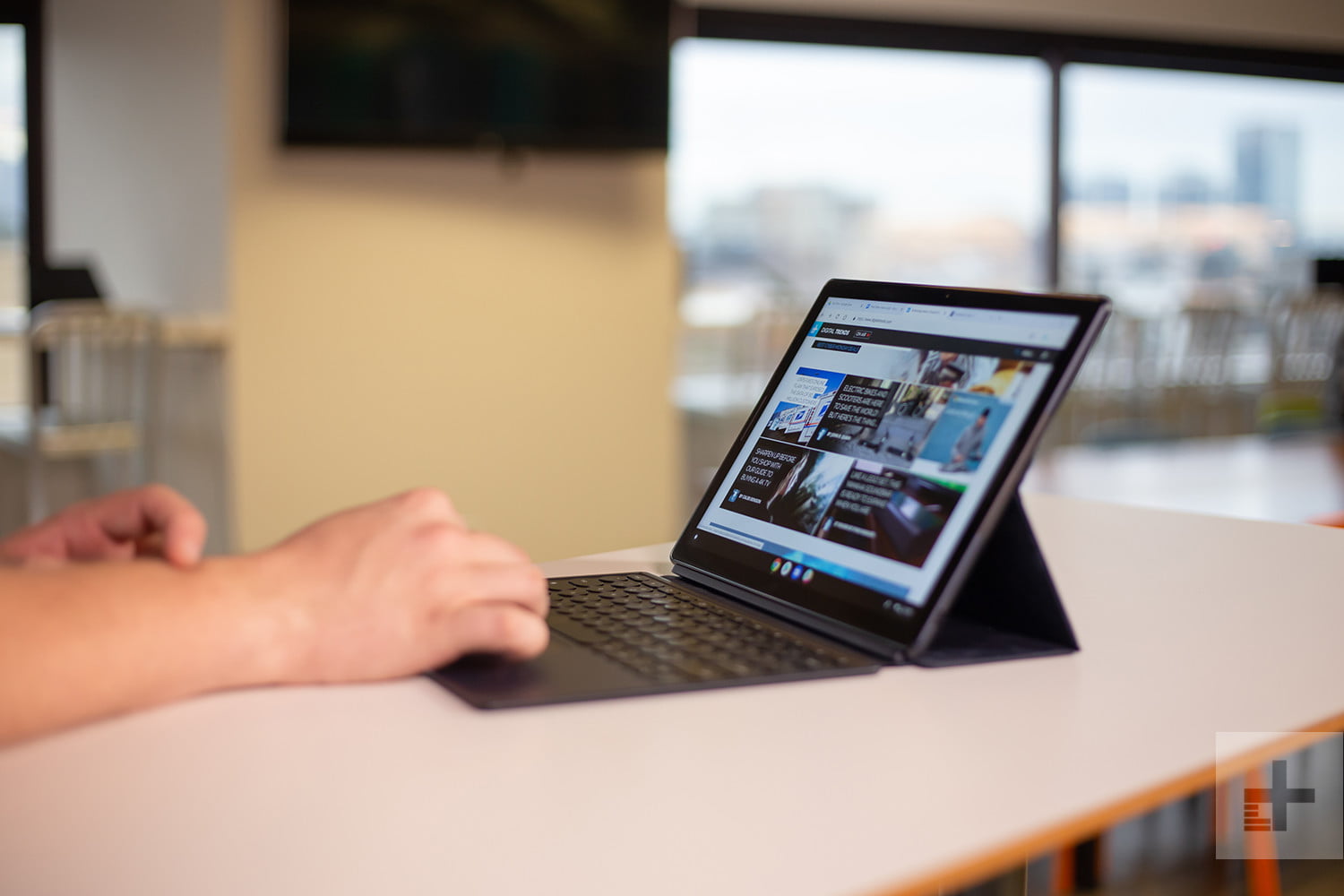
Fans of Google’s Chrome OS don’t have too many options when it comes to premium machines. The majority of Chromebooks are targeted at the budget market; however, Google’s own premium devices, the Pixelbook and Pixel Slate — starting at $1000 and $600 respectively — offer high-end features for die-hard Chrome OS enthusiasts looking for the best possible experience.
Google’s Pixelbook was unveiled in 2017, showing the world what a true premium Chromebook could look like when the price was not a limiting factor. Followed up this year with Google’s new Pixel Slate, the two devices occupy a premium Chromebook spot all on their own, but if you are looking between the two machines, what is the best choice for your daily life?
Design
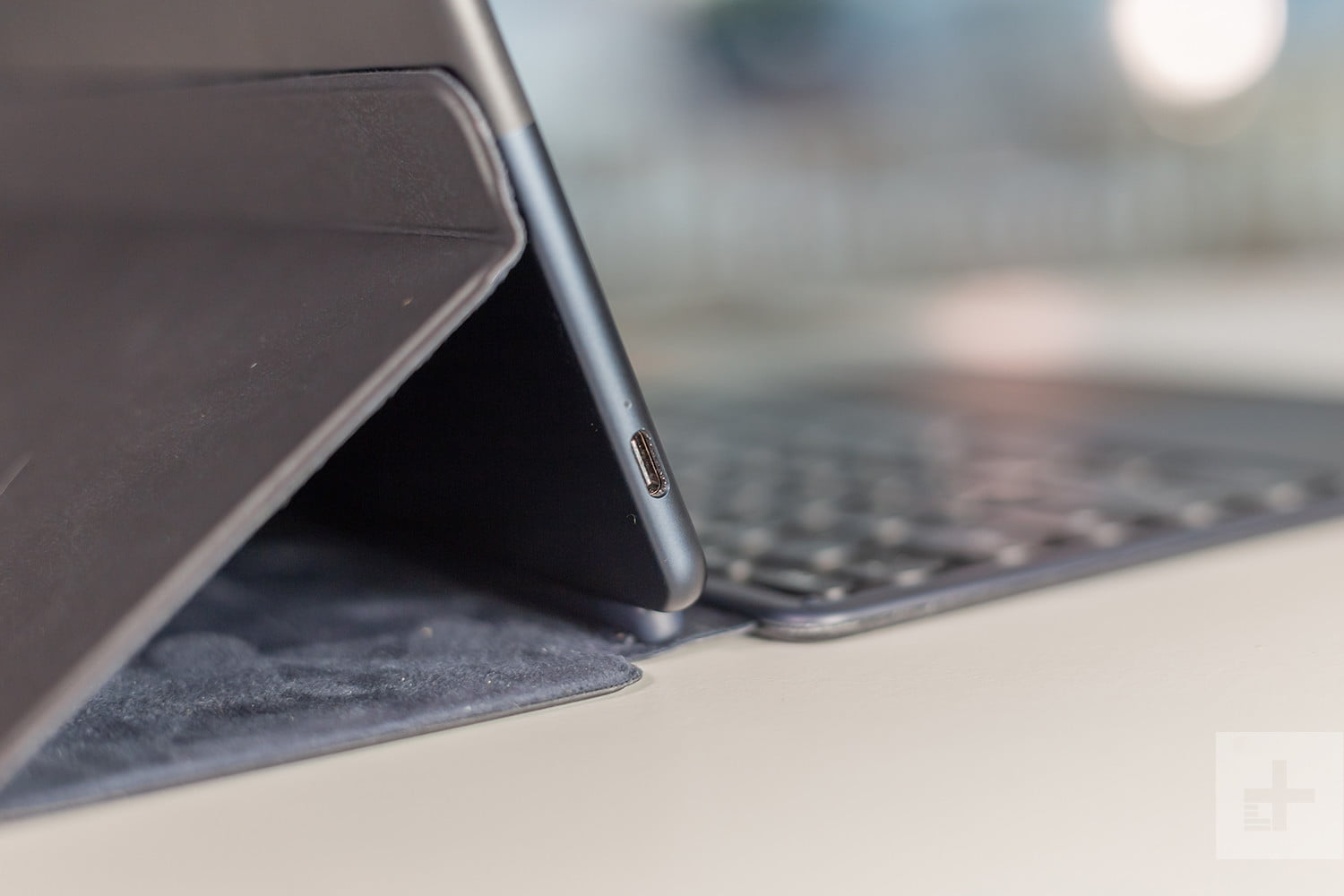
Both the Pixelbook and Pixel Slate are premium machines crafted from aluminum and feature tough Corning Gorilla Glass. As a tablet, the Pixel Slate features an aluminum backing in “Midnight Blue” with a beautiful screen — more details on that later — on the front. The Pixelbook presents itself as a laptop with a silver aluminum finish and a white glass accent on its lid. While both devices are forged from the same materials, their overall designs serve very different functions.
The original Pixelbook is modeled after a standard clamshell notebook with a built-in keyboard, trackpad, and display. Open the Pixelbook, and you’ll find yourself treated to a laptop experience like many others, but push the screen back to discover the 360-degree hinge. Able to bend completely backward, the Pixelbook’s screen can fold behind the keyboard to create a tablet experience.
We found the look of the Slate to be a bit too drab for our tastes, and it doesn’t fit well with Google’s other hardware like the Pixel 3. That draws in comparison to the Pixelbook, which we really liked for its luxurious feel and the mirrored pane of glass on the display lid.
On the other hand, the Pixel Slate is a tablet through and through. Out of the box, the Pixel Slate does not include a keyboard or trackpad but is instead a flat slab to be controlled entirely via touch input. The new Pixel Slate Keyboard, sold separately for $199, can transform your experience by adding on a keyboard cover with the missing components to improve your use when you need to get work done.
We really liked the keyboard on the Pixel Slate, and although its circular keys took some getting used to, it felt quite innovative. Despite its limited travel between keystrokes, it proved useful for us since it doubles up as a way to prop up the device. It emulates the feel of a real kickstand and allowed us to change the angle of the screen with just one hand.
As with most hybrid devices, they are typically better at one function over the other. If you’re looking for a traditional laptop, you’ll most likely be happiest with the Pixelbook, but if you harness the true impact of having Android apps on your device, the Pixel Slate is far more versatile.
Performance
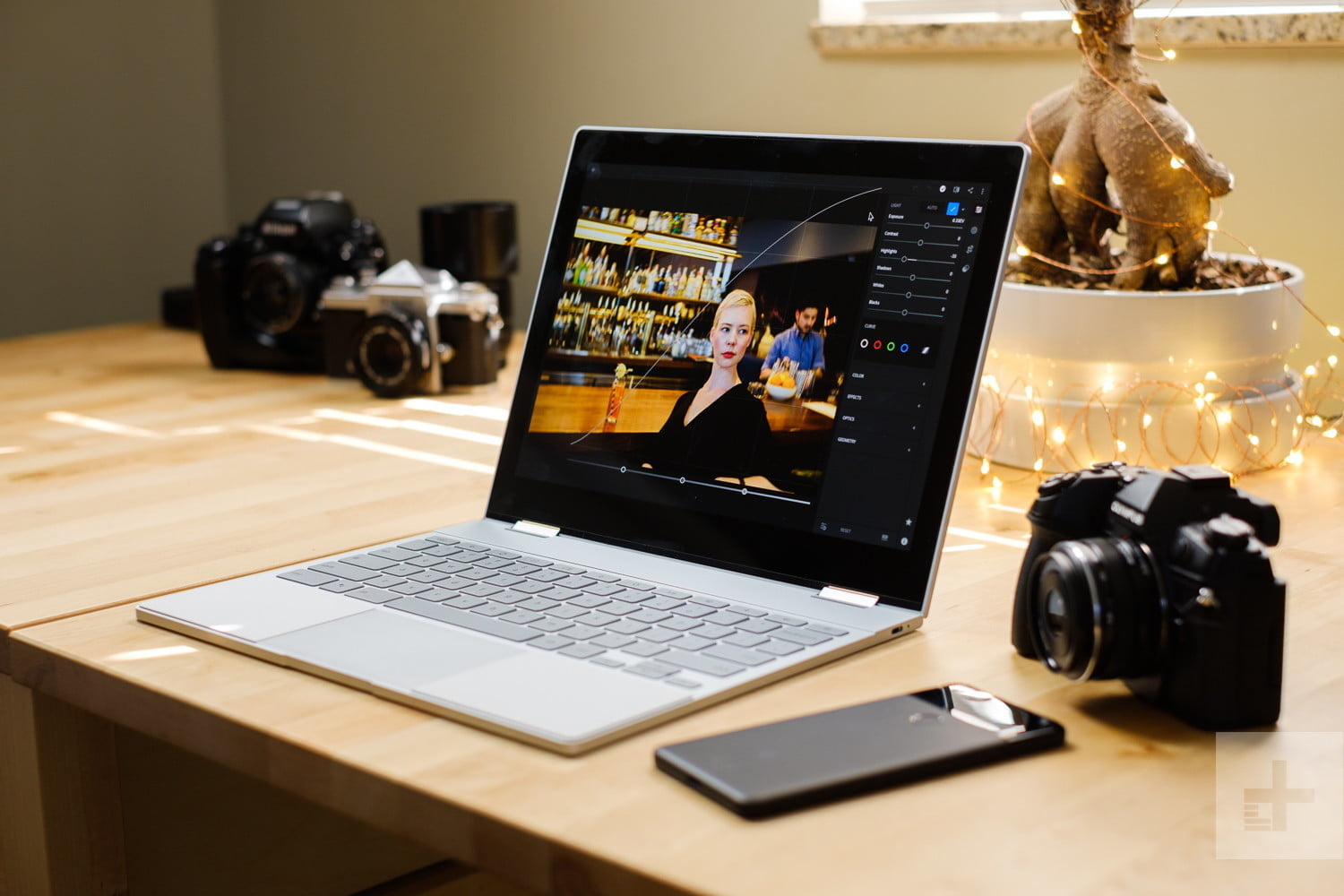
Chrome OS is a lightweight operating system that typically doesn’t require much under the hood, with many budget models coming packed with a suitable Intel Celeron CPU. However, these flagship machines from Google are giving you the options to go premium with respectably fast Intel Core processors. Add on a healthy amount of RAM, and both devices are ready to tackle the web without issues.
The Google Pixelbook allows consumers to choose between a 7th-gen Intel Core i5 or i7 processor, which, while now a generation out of date, have yet to show their age when powering the Chrome OS platform. Backed up by 8GB or 16GB of RAM, the Pixelbook might be a year old, but its specs should keep fans running for quite a while into the future. Additionally, the Pixelbook offers massive storage options for a machine of its class with 128GB, 256GB, and 512GB available.
The Pixel Slate is less powerful in its base configuration due to its Intel Celeron processor but gives buyers the option to upgrade to the latest 8th-gen Intel Core m3, i5, or i7 CPUs. Memory options also start a bit lower at 4GB, but users can increase that number to either 8GB or 16GB for an extra fee. Depending on the model Pixel Slate you purchase, different storage options are available, with the lower-end Celeron option offering 32GB or 64GB of SSD storage, up to 256GB in the Intel Core i7 variation.
We reviewed the Google Pixel Slate with the dual-core Core i5-8200Y processor and found it was fast enough for most tasks we threw at it. For most people, that includes playing Android games, as well as web browsing with up to fifteen or twenty tabs open. We still think that you’ll eventually hit a multi-tasking wall with the Slate and suggest upgrading to one of the faster models.
Both devices should offer great entertainment experiences with 12.3-inch screens and dual speaker systems. The new Pixel Slate provides a slightly improved display, which Google calls a Molecular Display, and features an improved sharpness of 293 pixels per inch (PPI) compared to the Pixelbook’s still respectable, 235 PPI. The screens on both are capable of 400 nits of brightness, offer touchscreens with support for Google’s Pixelbook Pen, and cover 72 percent of the NTSC color space. In our review of the Google Pixel Slate, we really liked the display. It was particularly sharp and was amazing for watching movies. The colors come with a cooler tint, and images look lifelike and not over-saturated.
Those looking for a healthy port selection won’t find much more on either machine than a few USB-C ports. The Pixelbook features two USB-C ports, a fingerprint sensor, and a 3.5mm headphone jack, while the Pixel Slate offers two USB-C ports and the Pixel Slate Keyboard accessory connector.
That’s right, the Slate doesn’t have a 3.5mm headphone jack, and people will instead need to rely on wireless headphones or the included USB-C adapter to listen to tunes.
Portability
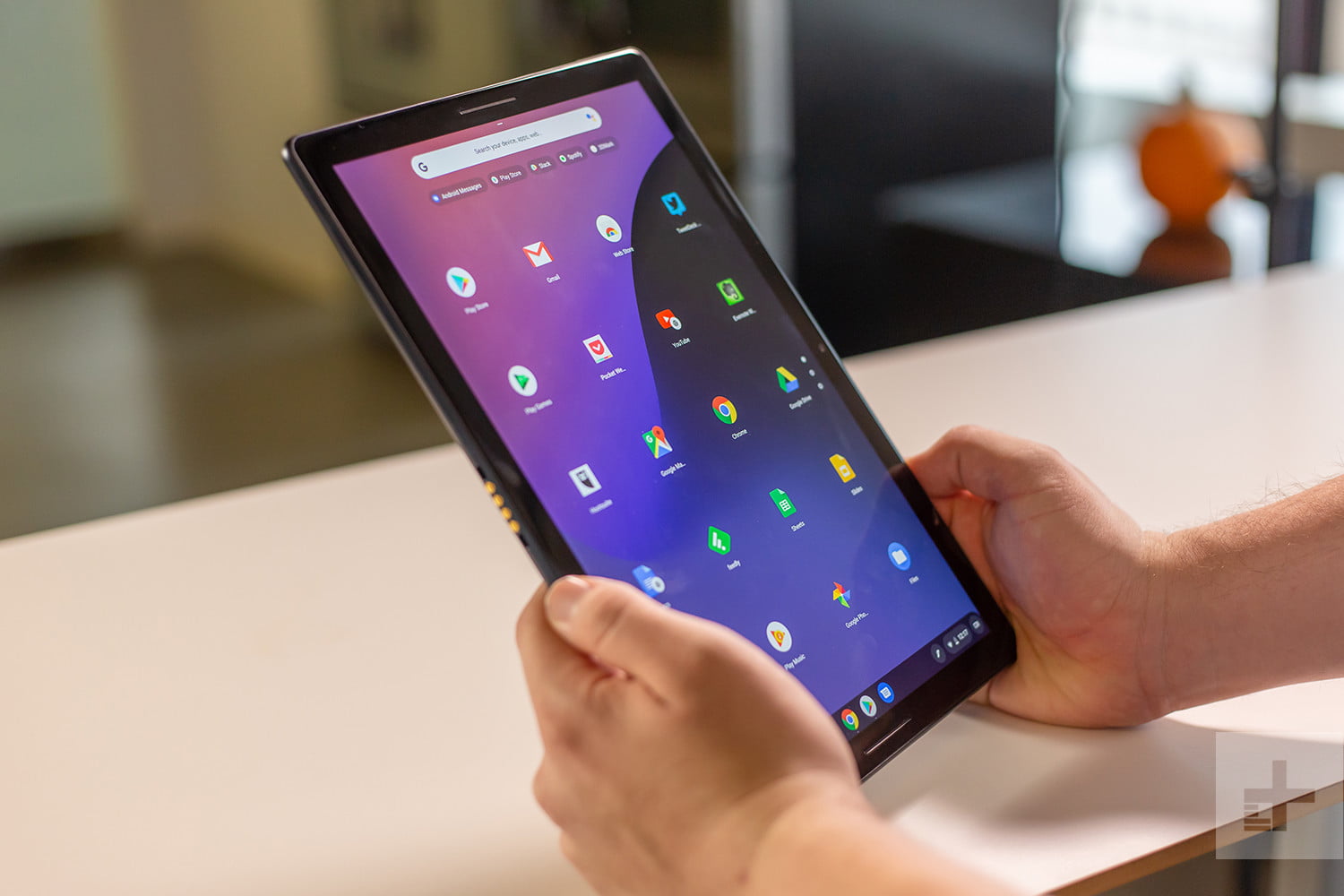
The Pixelbook and Pixel Slate are both designed for travel — these aren’t machines intended to live on your desk. With both devices featuring aluminum body constructions, Google’s new devices offer sturdy, yet lightweight, solutions for anyone on the move.
Best of all, the Pixel Slate packs improved battery life. In our testing, the Pixel Slate came home with roughly ten hours and 45 minutes of web browsing before shutting down, and about 12 hours when looping a video. The Pixelbook, on the other hand, comes home with just about enough to get us through a workday.
The Pixelbook weighs in at 2.4 pounds and covers a dimensional space of 11.4 inches long, 8.7 inches wide, and 0.4 inches thick. A neat and compact package, the Pixelbook won’t be weighing anyone down and should be excellent for road warriors. In comparison, the new Pixel Slate weighs in at 1.6 pounds and covers a space of 11.45 inches long, 7.95 inches wide, and 0.27 inches thick. Of course, those who will be using the Pixel Slate with its keyboard accessory will need to add on another 1.1 pounds and 0.2 inches of thickness.
We found the Pixel Slate as a relatively portable device, with the rounded edges being easy to grab, and the large bezels offering grip when using it one-handed. For us, it felt lighter than it is, especially since Google worked to pack heavy components towards the center of the device for a more balanced feel.
Speaking a bit more of the Pixel Slate Keyboard, users who opt to purchase the accessory can connect it easily via Google’s Quick Snap Connector, and need not worry about recharging the case separately. Made of polyurethane, microfiber, and glass, the Slate Keyboard is an impressive add-on, but it doesn’t come cheap at $200.
For individuals on the road who live off of video calls and conferences, both units pack onboard microphones with noise cancellation and front-facing cameras. The Pixelbook is limited to a 720p webcam, while the Pixel Slate offers an 8MP 1080p, in addition to an 8MP rear-facing camera that also captures 1080p video.
The Pixel Slate makes more sense
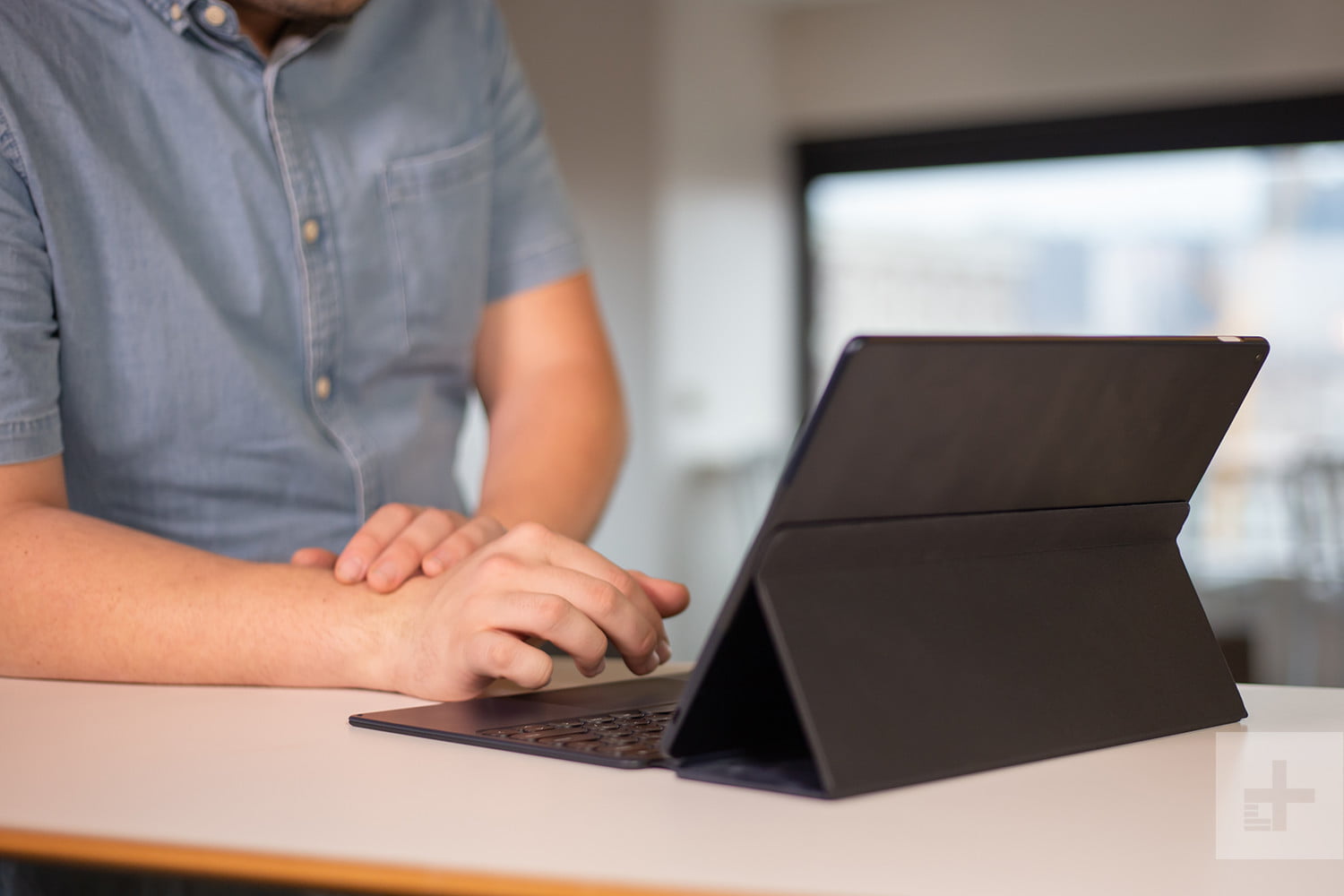
Google’s Pixel Slate is the newer device. It’s less expensive but has more modern hardware, and it’s a better device for tablet use. Though it is best for web browsing, we still think that the Google Pixel Slate makes an interesting proposition as a tablet. Google has done a lot to improve Chrome OS, and features like the Google Play Store and split-screen mode make it feel a bit more like Android. Sure, Android apps might not be fully optimized for the Slate, but you’re getting two operating systems with one device. The Pixelbook is too heavy and thick to be properly enjoyed this way.
Though the Pixelbook does better with the design, the Pixel Slate comes with a better display and battery life. Unless you’re attached to the look of the Pixelbook, we can’t think of many reasons to not opt for the Slate instead.
